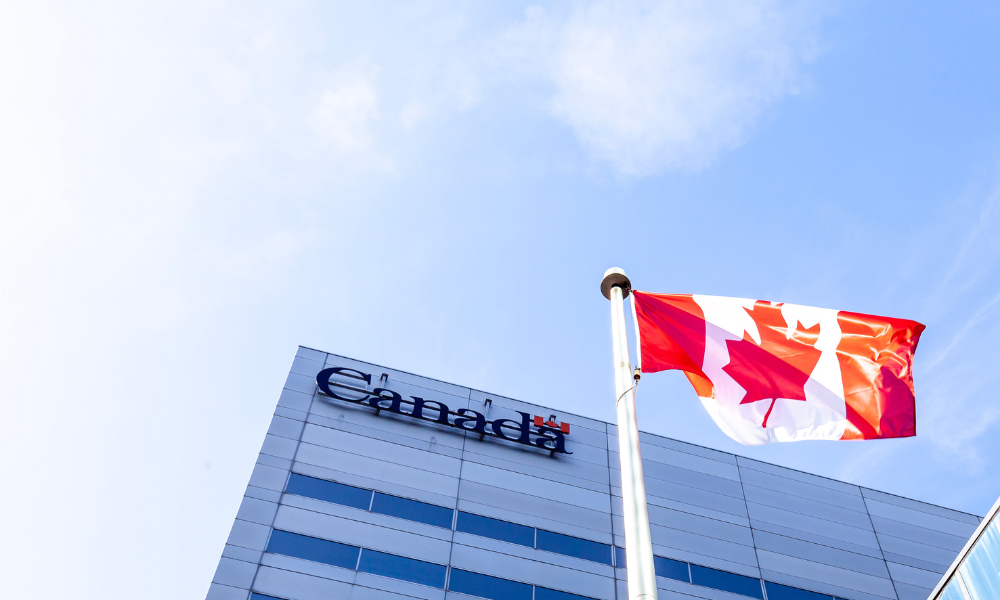Discover how high-interest savings accounts in Canada can elevate your clients' portfolios and your advisory value as a trusted wealth professional

Cash management can be overlooked in financial planning despite it having a big part in protecting capital and maintaining liquidity. A high-interest savings account can give your clients a simple way to earn competitive rates on idle cash without locking it in. Unlike standard savings accounts, high-interest options reward clients for holding funds without added risk.
In this article, Wealth Professional Canada will shed light on high-interest savings accounts that you can recommend to your clients. We’ll look at what makes these accounts valuable as well as some advantages and disadvantages of this account type. Whether your clients are waiting to invest or building cash reserves, these high-interest savings accounts deserve closer inspection.
What is a high-interest savings account?
Just like any traditional savings account, a high-interest savings account has the same functions. However, what sets it apart is the ability to earn higher returns on your clients’ deposits. It allows them to earn more interest without taking on investment risks.
These accounts are usually offered by online banks or digital-first platforms that can afford to pay higher rates due to lower overhead costs. The interest is usually calculated daily and paid monthly, which helps compound returns over time.
If your clients want to keep their funds safe, liquid, and growing steadily, a high-interest savings account is a practical solution. It’s especially useful for short-term goals or emergency cash reserves.
Watch this video to know more about this account type:
In line with this, find out more about high-interest savings ETFs and see whether you can use this to attract more clients.
Which Canadian bank has the highest savings interest rate?
Several banks stand out when it comes to offering the best savings interest rates in Canada. These banks have earned their reputation for providing good services and competitive rates. There are no monthly fees for all accounts, except for KOHO whose monthly fees are anywhere from $0 to $14.75.
Check out this comparative table showing high-interest savings accounts that your clients can choose from:
|
Savings account |
Interest rate |
Insurance |
|---|---|---|
|
CIBC eAdvantage® Savings Account |
up to 4.90% |
Canada Deposit Insurance Corporation (CDIC) |
|
Scotiabank MomentumPLUS Savings Account |
up to 4.90% |
Canada Deposit Insurance Corporation (CDIC) |
|
BMO Savings Amplifier Account |
up to 4.75% |
Canada Deposit Insurance Corporation (CDIC) |
|
Tangerine Savings Account |
up to 4.50% |
Canada Deposit Insurance Corporation (CDIC) |
|
KOHO Spending and Savings Account |
up to 4.00% |
Canada Deposit Insurance Corporation (CDIC) |
|
Simplii Financial High Interest Savings Account |
up to 3.70% |
Canada Deposit Insurance Corporation (CDIC) |
|
Laurentian Bank High Interest Savings Account |
up to 3.20% |
Canada Deposit Insurance Corporation (CDIC) |
|
FirstOntario Credit Union High Interest eSavings Account (Ontario only) |
0.80% - 1.00% |
Financial Services Regulatory Authority of Ontario |
|
RBC High Interest eSavings |
4.70% |
Canada Deposit Insurance Corporation (CDIC) |
|
EQ Bank’s Personal Account |
3.50% |
Canada Deposit Insurance Corporation (CDIC) |
|
PC Money Account |
3.10% |
Canada Deposit Insurance Corporation (CDIC) |
|
WealthONE Bank of Canada High Interest Savings Account |
3.10% |
Canada Deposit Insurance Corporation (CDIC) |
|
Bridgewater Bank Smart eSavings™ Account |
2.80% |
Canada Deposit Insurance Corporation (CDIC) |
|
Home Trust High Interest Savings Account (HISA) |
2.80% |
Canada Deposit Insurance Corporation (CDIC) |
|
Oaken Financial Savings Account |
2.80% |
Canada Deposit Insurance Corporation (CDIC) |
|
Saven Financial High-Interest Savings Account |
2.80% |
Financial Services Regulatory Authority of Ontario |
|
Canadian Tire High Interest Savings® Account |
2.75% |
Canada Deposit Insurance Corporation (CDIC) |
|
Neo High-Interest Savings Account |
2.50% |
Canada Deposit Insurance Corporation (CDIC) |
|
ATB Financial High Interest Savings Account (Alberta residents only) |
2.30% |
Guaranteed under the ATB Financial Act |
|
Motive Financial Motive Savvy Savings Account |
2.25% |
Canada Deposit Insurance Corporation (CDIC) |
Let’s get to know the Top Five in detail:
1. CIBC eAdvantage Savings Account
The Canadian Imperial Bank of Commerce (CIBC) is a full-service global financial organization and one of Canada's five largest banks. Its eAdvantage Savings Account can earn a healthy regular interest rate of up to one percent, which can be increased to 4.9 percent.
It also has a 0.25 percent Smart Interest, a benefit that could reward your clients for saving at least $200 per month with a balance limit of up to $200,000.
2. Scotiabank MomentumPLUS Savings Account
Bank of Nova Scotia or Scotiabank, founded in Halifax in 1832, is one of Canada's oldest and largest banks. It is also a member of the country's Big Five banks. Its MomentumPLUS Savings Account has a limited-time interest rate of 4.9 percent for a 90-day premium period.
This account type allows savings for multiple goals in one place and offers higher interest the longer funds are held. Your clients can also earn bonus interest by opening and funding premium periods. Rates, fees, and terms are effective as of March 2025 but are subject to change.
3. BMO Savings Amplifier Account
For our next high-interest savings account, we have Bank of Montréal’s Savings Amplifier Account. It has a competitive interest rate with no minimum investment required. Interest is calculated daily and paid monthly. Your clients can transfer funds freely to other BMO accounts with no fees.
A $5 charge applies to:
- pre-authorized debits
- ATM withdrawals
- debit card purchases (in-store or online)
- transfers assisted by a bank representative (in-branch or by phone)
For a limited time offer, your clients can earn a promotional rate by opening a new chequing account and depositing up to $1 million. Qualifying plans include:
- Performance Plan
- Premium Plan
- AIR MILES® Plan
- Plus Plan
- Practical Plan
4. Tangerine Savings Account
Tangerine Bank is a Scotiabank subsidiary that offers retail banking products, including:
- credit cards
- chequing and savings accounts
- guaranteed investment certificates (GICs)
- registered accounts such as Registered Retirement Savings Plans (RRSPs) and Tax-Free Savings Accounts (TFSAs)
As for its high-interest savings account, Tangerine Savings Account offers a regular interest rate of 0.3 percent. It has a promotional 4.5 percent rate for new clients who open an eligible account within 60 days of signing up. It has no monthly fees or minimum balance requirements.
Some of its upsides include:
- unlimited self-serve transactions
- an automated savings program
- immediate access to funds
A service fee of $45 applies to non-sufficient funds. Deposits are eligible for CDIC coverage, adding an extra layer of protection.
5. KOHO Spending and Savings Account
The KOHO Spending and Savings Account has monthly fees ranging from $4 to $14.75, depending on your clients’ plans:
- Essential Plan: 2.5 percent
- Extra Plan: three percent
- Everything Plan: four percent
Your clients can earn up to five percent instant cash back when they make purchases using the KOHO prepaid Mastercard. They can also build credit by paying rent through KOHO’s Rent Reporting Deposits.
What to consider when recommending a high-interest savings account
High-interest savings accounts offer an efficient way for your clients to preserve capital while generating a modest return. These are particularly useful for short-term goals, emergency funds, or holding cash between investments.
However, not all high-interest savings accounts are created equal. Here are a few benefits and drawbacks to keep in mind:
Benefits
-
Competitive interest rates: High-interest savings accounts typically pay more than standard savings accounts. While regular rates can range from one percent to 2.5 percent, some institutions offer promotional rates above four percent, especially for new clients.
-
Liquidity: High-interest savings accounts allow your clients to access their funds without penalty. Most accounts support free e-transfers and inter-account transfers, although some might involve short processing delays.
-
No minimum deposit: Many top-rated high-interest savings accounts can be opened with as little as $0. This makes them accessible to those across different asset levels and planning stages.
Drawbacks
-
Transaction limits: Some high-interest savings accounts cap free monthly withdrawals or transfers. Exceeding these can lead to service charges or lower interest earnings.
-
Minimum balance rules: A few banks require a minimum ongoing balance to qualify for the full advertised rate or to waive transaction fees.
-
Promotional rates: High teaser rates often expire within a few months, dropping to less competitive levels. It’s important to review how the base rate compares after the promotional period ends.
If your clients want a secure, low-risk holding account, a well-structured high-interest savings account can be an ideal tool. Be sure to assist your clients in reviewing the fine print and matching each account’s features with their liquidity needs and timeline.
Are high-interest savings accounts a safe option for your clients?
Short answer: yes. A high-interest savings account can be a reliable option for your clients, especially if they want to earn interest while keeping their funds accessible. These accounts are offered by federally regulated financial institutions and are usually eligible for CDIC coverage.
While rates are often higher than traditional savings accounts, the upside is that this account type is considered as a low-risk investment. For those who want to protect their capital, a high-interest savings account can be a valuable addition to their overall cash management strategy.
If you want to build credibility, you must be able to align the right high-interest savings account with your clients’ financial objectives and needs. The more precisely you match account features with what they’re looking for, the more value you bring to every discussion about managing idle cash.
Explore and bookmark our Industry News page to get insights and updates about savings, investment, retirement, and more.



